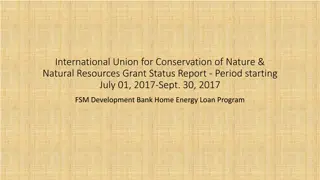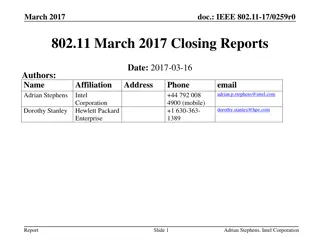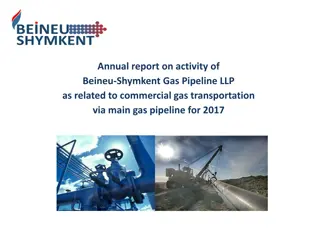
Implementing JATS at Taylor & Francis: Evolution and Quality Control
Discover the journey of implementing JATS at Taylor & Francis, a global academic publisher with numerous journal partnerships. Explore the timeline of adoption, creation of journal article DTD, and the central article tracking system's role in workflow management and content quality control. Learn about automated validation processes and online advances in quality control practices.
Download Presentation

Please find below an Image/Link to download the presentation.
The content on the website is provided AS IS for your information and personal use only. It may not be sold, licensed, or shared on other websites without obtaining consent from the author. If you encounter any issues during the download, it is possible that the publisher has removed the file from their server.
You are allowed to download the files provided on this website for personal or commercial use, subject to the condition that they are used lawfully. All files are the property of their respective owners.
The content on the website is provided AS IS for your information and personal use only. It may not be sold, licensed, or shared on other websites without obtaining consent from the author.
E N D
Presentation Transcript
Implementation of JATS at Taylor & Francis Presented at JATS-Con 2017 Vincent Lizzi 1
Taylor & Francis Group Global publisher of academic journals and books with many society partnerships. Journals Journal Pages 2017 Over 2,500 Over 1,831,000 2005 Over 1,000 Over 664,000 2
Timeline 2002 All journals online on MetaPress 2004 Articles online as PDF and HTML Standardize on one XML DTD CATS project launched 2006 New online platform Informaworld 2011 New online platform T&F Online DARTS content archive 2013 Transition production DTD to JATS 2017 Upgrade to JATS 1.1 3
Taylor & Francis Journal Article DTD Created in 2004 to standardize on one XML DTD for journal production Capture information at a granular level Store data in XML, formatting to be applied through presentation logic Article metadata, authors, affiliations, and references captured as data elements. 5
Central Article Tracking System Workflow engine and content management system used globally for all journals. Early features included: Multiple workflows Schedule estimation Store all versions of files Online PDF-based author proofs Transmittals by FTP to/from vendors Automated and visual XML quality control 6
Quality Control: Automatic Validation Automated validation runs every time an XML file is uploaded to or changed in CATS. Validation tool is shared with vendors to check files prior to delivery. Validation rules built in Java and Schematron File naming convention Valid to DTD / XSD Character encoding Consistent journal and issue data within an issue Article metadata consistency between XML and CATS data Specific XML tagging rules 7
Quality Control: Online Advances 8
Constructing a Single Format Archive Created content archive in 2011 as part of the new online platform Taylor & Francis Online. Choices: 1. Use TFJA DTD as our archival format, require Atypon to load content using TFJA DTD. 2. Use Atypon NLM 3.0 DTD for production and archiving, and retire the TFJA DTD. 3. Use TFJA DTD as our archival format, and transform XML to Atypon NLM 3.0 DTD. 9
XSLT delivery process Content Archive Production Files XSLT Taylor & Francis Online Content Distribution Partners PubMed Central 10
Production DTD upgrade Started DTD upgrade project in 2012. Choices: 1. We could upgrade the TFJA DTD. 2. We could use the JATS DTD version 0.4 off the shelf . 3. We could customize the JATS DTD. 11
Analysis of JATS Started with analysis of over 60 areas of XML to produce recommendations classified as: Subset Remove some of the flexibility that is available in the tag set. Extend Add new elements, attributes, or other improvements not in the standard tag set. Restrict Rules we would apply through instructions or validation. 12
Analysis of JATS Base TF JATS on Green JATS. The Publishing (Blue) DTD is a profile of JATS with certain decisions already made. In some areas the Publishing DTD was too strict and in other areas the restrictions did not match our needs. Starting with Green allowed us to make restrictions that match the needs of our systems while allowing flexibility in other places. 13
Customizing JATS 1.0 Focused on XML Schema first, adding OASIS CALS table model, MathML 3, and our extend and subset recommendations. However! XML Schema could not hold all our validation rules and presented some problems: Whitespace lost in mixed content elements Date types allow year with more than 4 digits A DTD and a validation tool would be required. 14
TF JATS 1.0 TF JATS version 1.0 released with: Customized JATS DTD XML Schema equivalent to the DTD Validation Tool Tagging Guidelines documentation 15
Production Transition to JATS CATS and our content archive were updated to support both TFJA and TF JATS. Same workflows. Mostly same functionality minor differences in element names, date formats, XML update capability. 16
Production Transition to JATS Rule #1 All articles in a issue file have to be in the same format. Could allow new versions of an issue file or article file to use a different format. Accepted that a minority of articles would have to be reprocessed due to article based workflows. 17
Production Transition to JATS Rule #2 Each journal would begin using TF JATS with a specified issue and would use that DTD from that issue onwards. If an earlier issue required redelivery for any reason it could still be supplied using TFJA. 18
Production Transition to JATS Rule #3 Transition period would begin 15 April 2013 and have hard end date within a few months. Set 30 September 2013 as end date based on monitoring the progress of the transition. 19
Production Transition to JATS Our vendors worked within these rules to transition production work to JATS. First file deliveries were inspected by in house staff. Many questions were raised. Added answers to our documentation Added rules to our validation tool 20
Current: Updating to JATS 1.1 Work in progress to upgrade to JATS 1.1. Change in implementation strategy: Modify the Green DTD and XML Schema making fewer changes. Apply restrictions using Schematron and the validation tool Focus efforts toward improving our documentation 21
Customizing JATS Changed the xml:lang attribute on the <article> element to required , and removed the default value. Require the article language to be specified and do not assume English. 22
Customizing JATS Changed the dtd-version attribute to remove the fixed value. Allow other values in dtd-version to declare that a file should be valid to a version of our validation rules. 23
Customizing JATS Added the xsi:schemaLocation and xsi:noNamespaceSchemaLocation attributes on the root elements in the DTD. Makes it possible to use the DTD to validate XML that references an XML Schema. 24
Article Version Identify the version of an article, e.g. accepted-manuscript , version-of-record Version is added to PDF metadata: Submitted comment to JATS standing committee. 25
Lessons to share Start with the Green JATS DTD and use Schematron to implement validation rules. Spend time creating good documentation with plenty of examples. Customize the JATS DTD and XML Schema if you need to. If you customize, host a minified DTD at a stable URL and use the URL in the XML DOCTYPE. Using XSLT in content delivery processes can provide flexibility to enable quick changes in digital output. 27
Thank you! 28






















